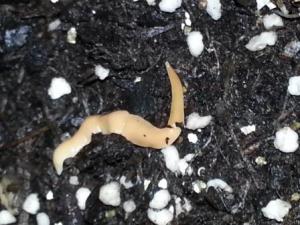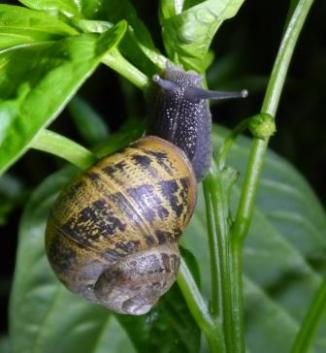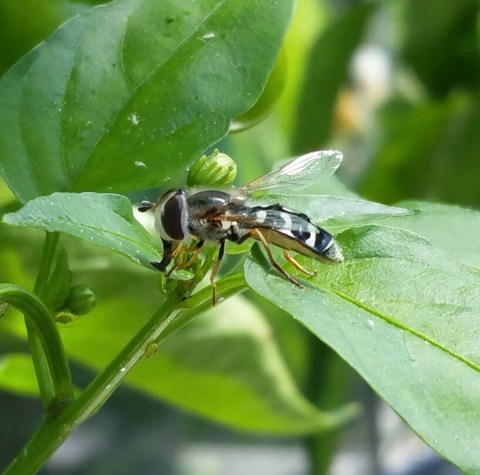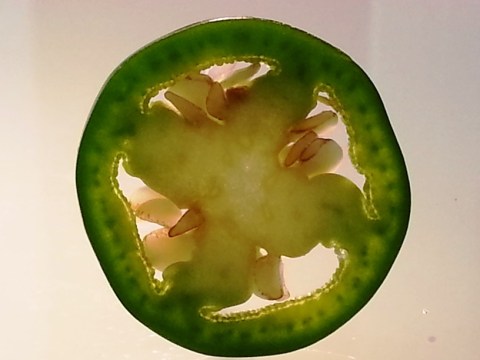This is part of my therapy, but I already get the feeling it isn’t going to work.
Warning, this article contains a lot of Flatworm information and a picture; reader beware.
Firstly I will say that I am not usually squeamish about creepy crawlies, in fact from a very early age I have chosen to seek them out. I was a keen amateur entomologist as a young teenager, and still am. I kept giant cockroaches as pets, and have always wanted to know what lies beneath rocks and stones.
Apart from one experience when I opened the lid of the compost heap and momentarily confused half an avocado skin with a giant slug I don’t remember being too repulsed by invertebrates, although a 7 inch giant centipede did run over my foot in Australia once, so I have a bit of a thing about those, and that is fair because they do bite.
One thing, however, that has always sent shivers down my spine is Flatworms, and flatworm-like things in general. Until last week my only experience of such creatures has been horror films, The X Files, and the like, in which they generally cause mayhem beyond what you would expect from the average squishy thing.
Oh, and I don’t like leeches either. There is a pattern emerging here, soft shiny wet things that are wider at one end than the other and move, sometimes quickly.
This therapy isn’t working.
Most gardeners have probably heard of the New Zealand Flatworm but have probably not experienced them, so their knowledge is limited to the fact that they are an unwanted import, they probably came to this country in the pots of imported Tree Ferns, and they are a pest we don’t want or need.
They have been around for a while, taking hold in the great gardens of Cornwall where Tree Ferns and similar plants thrive and Victorian enthusiasts built great collections of imported fora from around the globe.
So anyway, last week I was on my nightly slug hunt, the weather has warmed, though still damp and they are emerging ready to do damage. I was mooching round one of my new raised beds, scissors in hand, snipping the odd slug here and there. Suddenly something caught my eye, something out of place, and the beam of my head torch landed on a slippery orangy-yellow thing. I knew what it was instantly, luckily it wasn’t very big, maybe an inch and a half. But I winced and I could feel the blood rushing round my ears. Then there was another one, this time wriggling, wrestling with an earthworm.
This is what they do, they eat earthworms by digesting injecting them with a poison which dissolves their insides and then they suck out the juice.
This therapy definitely isn’t working.
The two worms were each snipped into four pieces, all of them still wriggling quickly. I hope all these 8 parts don’t carry on living, the consequences aren’t worth thinking about.
I took a picture and tweeted it, all the time trying not to look and I hoped that someone might correct my misdiagnosis, but all I got was confirmation and one lady who put the final nail in the coffin of my Flatworm phobia. ‘They can escape from a sealed jam jar!’
I don’t know for sure if mine are New Zealand Flatworms, I never made a positive identification. I don’t want to look at any more pictures. There are also Australian Flatworms which, I imagine, are slightly larger, a bit more aggressive and in your face, and care a little bit less about the environment around them. I hope, at least, that mine are from New Zealand.
That night I had the worst nightmare I have ever had. A proper ‘you only ever see it in the movies’ type nightmare. I can’t go into the details of it but it involved lots of Flatworms, dozens of them, and huge, much like Indiana Jones in a pit of snakes, and I awoke with a proper scream. My wife thought I was dying.
My slug hunting expeditions have abated for a while. Hopefully my Nemaslug treatments, and general plant protection are doing their job. I think that the flatworms only live at the bottom of my garden where there is a strip, sheltered by a tall fence, that never sees the sun. This is where the compost area is and I think this is how the Flatworms came to be in my raised beds. The household compost goes in a big bin which is really a wormery and when I built the beds I emptied all the bin into the bottom of the beds.
We have barely had a frost this winter, in fact where I live I suspect ‘This has been the warmest winter on record’ and I think this provides a perfect habitat for Flatworms to thrive.
Flatworms can’t tolerate frost, and luckily they can’t live in temperatures of over 20c, so maybe this summer and a cold winter will see them off. I don’t know where they came from, I have never brought plants imported from New Zealand, maybe my neighbour has, or maybe they are just gradually spreading. I don’t think Devon is the best place for them, although it is generally quite wet, things do dry out in the summer. From what I have read, (which is very little, as most internet articles are accompanied by photographs), I gather they prefer Scotland, where they escape frost by burrowing down, and enjoy constantly damp summers.
Worse has happened, yesterday my nightmare nearly came true. I was repairing a path along the bottom of the garden, in the shady area. I lifted the edge of some weed control stuff that lay under the path, and through a hole in it, from underneath, a bigger more orange Flatworm wriggled, half way out, fatter and the visible part was an inch and a half without what lurked beneath. I couldn’t kill it. Where else are they? In my wellies? around my radishes? In my hair? Aaaah.
This therapy hasn’t worked. The path is still unfinished and this article won’t be proof read so apologies for any errors. I don’t even know if Flatworms are one word or two, I’m not going to look it up and I anyway I can’t read this again, at least not for a while. I don’t expect others to read this anyway, it isn’t the sort of subject matter people go out of their way to find.
This is one of my flatworms, before it was chopped. I held my hand in the way of the picture while I was editing it, so I don’t even know if it looks OK. You decide.

Flatworm


















